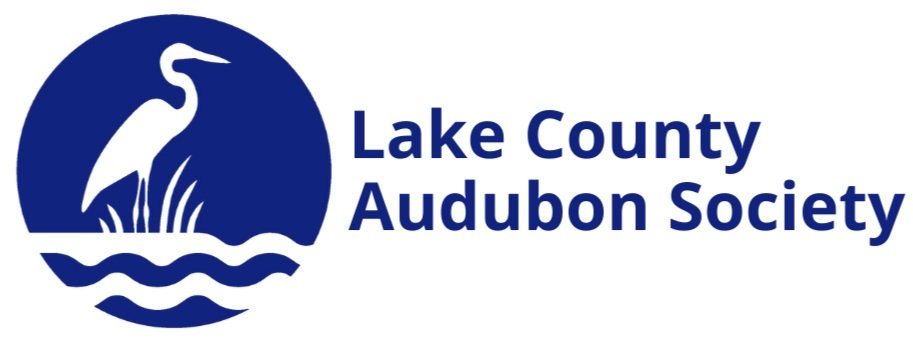Spring into Birdscaping
There has been a decline of 3 billion birds in North America since 1970 – a 30% decrease. The front lines of conservation for birds are found where people live – our own backyards. There are several ways you can help birds thrive in Lake County, most importantly by providing habitat for bugs and birds at home. The greatest habitat benefits are provided by landscaping your yard with locally native plants that provide a variety of food for birds year-round covering breeding, nesting, migrating and winter seasons. Plant leaves, fruits, nuts, seeds, and nectar are food for birds - and for the bugs that are food for birds. Shrubs and trees are especially important sources for nests and shelter as well as food.
Ninety-six percent of terrestrial birds only feed their young insects while in the nest so bugs such as native caterpillars are crucial for successful breeding and rearing of young birds in the spring and summer. Berries, seeds and nuts are food sources year-round, but are especially important during migratory periods. Nectar provides food for hummingbirds and for insect pollinators. Selecting native plant species for your yard that provide flowers, fruits, nuts and seeds throughout the seasons: spring, summer, fall and winter will benefit birds the most.
The simplest way to become more bird friendly at home is to add native plant species into your existing landscaping. A great way to create an affordable bird-friendly yard over time is to select an area or section of your yard to landscape/re-landscape with native plant additions each year. You may want to reduce lawn and add a planting bed with native plants. Don’t forget to select native shrubs and trees to add to your yard in addition to flowering plants. There are several local, regional, and national organizations and nursery businesses that support native plants for birds at home. National Audubon Society, Cornell Lab of Ornithology and Wild Ones are great sources for more information on what plants to use and how to design a native plant garden.
“Birdscaping” is the planting of native flowering plants, grasses, trees and shrubs that are important for birds and other wildlife. “Native plant species” are the plants that have adapted and developed to live in our area (or ecoregion) over time - they are adapted to seasonal conditions that occur here and are resilient to local variations in temperature, light, and moisture. A native plant community is best suited to provide the habitat native insects, birds and other animals need to survive. Insects pollinate and eat the plants, and birds and other animals eat the insects, seeds and berries the plants produce. Plants also provide insects and animals with shelter from predators and the weather (heat, cold, wind, rain, and snow) and birds and other animals also use plants to build nests and raise their young.
Find out how to make your home a bird-friendly place by taking advantage of these resources.
https://nativegardendesigns.wildones.org/
https://www.audubon.org/news/how-make-your-yard-bird-friendly-0
https://feederwatch.org/wp-content/uploads/2013/10/BirdNote13-Creating-a-Garden-2012-03-27-RGB.pdf
When it comes time to purchase native plants, shrubs or trees for your bird-friendly yard, and you want to know how to install and care for them, look to these sources.
https://www.lcfpd.org/plant-sale/?gclid=EAIaIQobChMIhLyLu7n49QIVIv7jBx3EwwKqEAAYASAAEgJPxPD_BwE
https://citizensforconservation.org/cfc-events/spring-native-plant-sale/
https://citizensforconservation.org/cfc-events/fall-native-tree-and-shrub-sale/
https://openlands.org/programs/openlands-native-tree-plant-sale/
When the growing season is over, consider how to maintain your yard through the winter months to provide habitat for birds that migrate through and winter here. Leave some leaves and seeds. It is best to be a bit of an untidy gardener in the fall and winter. Leave some leaf litter for bugs to hibernate under, dead stems are homes for insect larvae, and seeds for birds and small wildlife to eat through the winter months. Messy is best for bugs and birds.
https://www.audubon.org/news/to-help-birds-winter-go-easy-fall-yard-work

